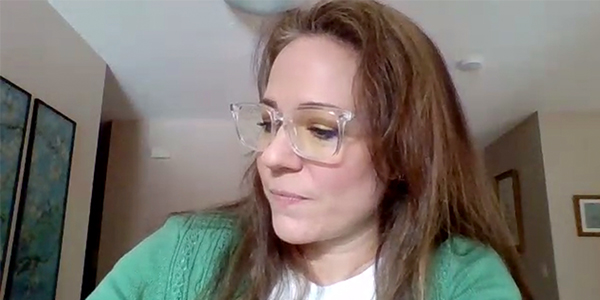A prolonged debate at Wednesday’s meeting of NERC’s Standards Committee led to a small but significant modification to a proposal that could change the scope of Project 2016-02 (Modifications to CIP Standards).
The proposal put before the committee would have begun the process of soliciting nominations for a standard drafting team (SDT) to “determine the appropriate criteria for defining low-impact transmission owner control centers” in the proposed reliability standard CIP-002-6 (Bulk electric system cyber system characterization). NERC’s Board of Trustees approved CIP-002-6 last year but reversed course last month, voting to withdraw the proposed standard from consideration by NERC Board of Trustees/MRC Briefs: Feb. 4, 2021.)
At issue for several members was the use of the term “field test” in the proposal, with several raising concerns about whether NERC’s standards development process had been properly followed. Neil Shockey of Southern California Edison pointed out that the organization’s Standard Processes Manual says that “field tests should be conducted before finalizing a SAR [standard authorization request] for the project” with approval from a NERC technical committee; that isn’t possible in this case because the project is already in progress.
NERC staff attempted to reassure participants that the proposal was not intended to authorize a field test, but simply to allow the existing SDT — whose “bandwidth is constrained” because of lack of data, according to NERC Legal and Regulatory Counsel Marisa Hecht — to delegate some of its work to a different team.
“Nobody’s coming forward today with any kind of proposal for a field test, what the parameters are to be, or anything,” said Howard Gugel, NERC’s vice president of engineering and standards. “We’re asking for the ability to go out and solicit a drafting team that should try to give us the scope of what this field test could be. … We’re not looking for a separate SAR; it’s something that’s done under the existing SAR of [Project 2016-02].”
Members remained skeptical, however. Barry Lawson, senior director of regulatory affairs at the National Rural Electric Cooperative Association, pointed out that the first line of the proposal mentioned “a [SDT] to conduct a field test,” which implied that a field test was the primary, if not the only purpose of the new team.
Participants offered several suggestions for clarifying the language, with an amendment from Shockey to simply remove the words “field test” from the draft proposal gaining favor from both committee members and NERC staff. The modified proposal passed with no votes against. Marty Hostler, reliability compliance manager at Northern California Power Agency, abstained.
Modeling SAR Team Approved Unanimously
Some members also raised questions about NERC’s proposed SAR drafting team for Project 2020-06 (Verifications of Models and Data for Generators), though the objections were dealt with quickly.
Charles Yeung of SPP pointed out that while the slate of candidates — comprising a chair, vice chair and 11 team members — included planning coordinators from each of the three interconnections, the PC from the Eastern Interconnection came from an entity in a non-market region. He questioned whether the candidate — who, like the other nominees, was not identified by name during the meeting — “can provide PC perspectives for the Eastern Interconnection market areas.”
Gugel replied that “it’s good to have [PC] representation for both market and non-market perspectives,” even if the market and non-market representatives hailed from different regions. As a result, the existing slate “gives [NERC] a nice, rounded team.”
Jim Howell, markets compliance manager at Southern Company Generation, said NERC’s slate “seems to be a little light on the generators … that actually have to coordinate … a fleet of generation to do this testing.” He proposed switching the nominees for chair and vice chair, suggesting that the vice chair nominee “seems to have a bit more experience in actually having to implement these types of standards.”
In response NERC Senior Standards Developer Latrice Harkness told Howell, “I don’t think that you lose anything by making one the chair versus the other.” WECC’s Steven Rueckert concurred, adding that the best leaders for SDTs are not necessarily subject matter experts but “people that can run the show and get the technical experts to weigh in.” Following these assurances, the candidates were approved unanimously.
Coordination Group Scope OKd
Members also voiced no objections to the last action item on the committee’s agenda, the endorsement of the scope document for the Standing Committees Coordinating Group (SCCG).
The main effect of the scope document is to formalize the SCCG, a gathering of the chairs and vice chairs of NERC’s standing committees — including Standards Committee chair Amy Casuscelli — that has been meeting informally for some time, as part of the organization’s “feedback loop.” The SCCG has two primary functions:
- Advise the standing committees on the ERO Enterprise’s “holistic efforts to triage key reliability, security and resilience risks and propose solutions to manage those risks;” and
- Develop an annual analysis of NERC’s efforts to address bulk power system risks, including a BPS risk registry and feedback on mitigation activities.





